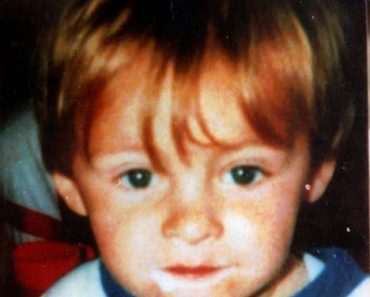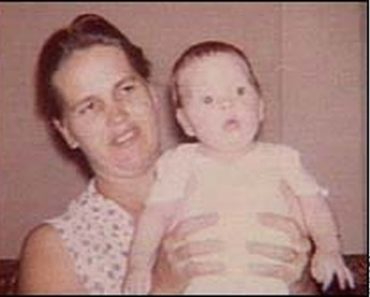 Retelling A Horror Story by Robert James Bidinotto
Retelling A Horror Story by Robert James Bidinotto
On the night of October 1st, 1993, twelve-year-old Polly Klaas, a pretty, straight-A student with laughing eyes and sun-streaked hair, was hosting two giggling girlfriends at a slumber party in her mother’s home in Petaluma, California.
Her mother and sister were asleep down the hall.
Around ten-thirty, Polly got up and went to the door of her bedroom. When she opened it, a big, stocky, bearded stranger with tattooed arms and cold eyes stood in the doorway, brandishing a kitchen knife.
“Don’t scream or I’ll cut your throats,” the man said.
He tied up Polly’s two friends and put pillow cases over their heads.
“Please don’t hurt my mom or sister,” Polly begged.
The stranger picked her up and told the other girls to count to a thousand. “Your friend will be back soon,” he promised.
But, as we all now know, that didn’t happen.
 The Man Hunt For Richard Davis
The Man Hunt For Richard Davis
For two months, a nationwide hunt for the missing girl riveted the nation.
Polly’s face—smiling, dimpled, wavy-haired—appeared in newspapers and magazines, on television and posters.
Not until November 27th did a property owner in a nearby county find suspicious articles of clothing near a tree. Alarmed, she remembered that on the night of October 1st, her babysitter had encountered a bearded stranger on her property in a stalled car. Police had been summoned, helped him out, and filed a routine incident report.
Now, she phoned the police about her recollection. They checked the earlier report and came up with a name. Only then did they pull up the man’s full criminal history. Within two days, the FBI matched a palm print left by the man in Polly’s bedroom to that of the man in the stalled car. He was a man who had just been paroled for kidnapping and sexual assault.
 Who is Richard Davis
Who is Richard Davis
Richard Allen Davis had been a one-man crime wave since childhood. As a kid, he tortured animals, burglarized homes, stole cars. An exasperated judge offered him a choice: reform school or the Army. Davis joined the military—which threw him out after a year of drug use, fighting, and vandalism. In 1973, he was arrested repeatedly for public drunkenness, burglaries, drug possession, and traffic warrants. But he was allowed to plea bargain everything down to a single charge of burglary. Sentenced to “time served” in jail while awaiting trial, he was back on the streets on probation in April 1974.
“Mr. Davis lacks both the courage and motivation to change his patterns,” his probation officer wrote. “There is no question that he will be in State Prison within a few years, unless the Criminal Justice System is able to make a more profound impression on the defendant than has been the case so far.”
The system made an impression on Richard Davis, all right: It started giving him welfare checks, counseling on money management, advice on job-seeking. In repayment, just five weeks after his release, he was caught burglarizing a school.
Psychiatrists warned that Richard Davis “is considered to be extremely dangerous to others, especially women.”
 Just A Walk Away Joe
Just A Walk Away Joe
Now he faced state prison, and his probation officer recommended it. But the court thought otherwise. It sent him to prison for a ninety-day diagnosis—then suspended proceedings so that he could enter an alcoholism treatment program at a V.A. hospital. Davis left the program on September 8th. Two days later, he was arrested again, as a felon possessing a dangerous weapon.
The system’s response? The court gave him a one-year suspended prison term—and three more years of probation.
It wasn’t until August 1975—after a new string of robberies, burglaries, and parole violations—that Richard Davis
was finally sent to prison. He was only 21. Though he’d been arrested some twenty times in only two years, this was his first time in prison. He was sentenced for an indeterminate period of six months to fifteen years.
The Parole Board Turned Him Loose After Only A Year
The very next month, in September 1976, he carjacked a legal secretary at knife-point and tried to sexually assault her. The bleeding woman escaped and Richard Davis was arrested by a passing policeman. While awaiting trial, he tried to hang himself in his cell. He was moved to Napa State Hospital for psychiatric evaluation. On December 16th, taking advantage of lax hospital security, he walked off.
Hours later, Davis broke into a Napa home and assaulted a sleeping woman. The next day, he stole guns. Two days later, he attempted to carjack a second woman. Richard Davis then burglarized a home, but finally was captured nearby by police.
Charged with six felonies, he pleaded insanity. Four court-appointed psychiatrists found him perfectly sane—but a cold-blooded sociopath. “He lacks conscience and has no feelings of guilt or remorse,” they wrote, warning that “if released, he would be certain to resume his pattern of criminal behavior: theft, burglary and assaults against women. Because of these assaultive tendencies, he is considered to be extremely dangerous to others, especially women.”
 LET’S MAKE A DEAL
LET’S MAKE A DEAL
Despite all this, another plea bargain eliminated all the sex and weapons charges in the first attempted car jacking which meant that Davis’s name would not go into California’s sex-offender registry. For that crime, he was given a term of one to twenty-five years for kidnapping. And he got another, even-better plea deal for the rest of his crime spree.
The D.A. consolidated six pending felonies into only two: assault with a deadly weapon and burglary. He and the judge didn’t even wait for the pre-sentencing report that would have revealed the scope of Davis’s criminal history.
“I was glad to get rid of the man,” the judge said later.
On June 28th, 1977, they did just that. For burglarizing a home, he was given a reduced charge of “receiving stolen property” and a sentence of six months to ten years. For the rest of the Napa crime spree, he got six months to life. All the sentences were to run concurrently with his previous sentences. Both the D.A. and the judge knew that under California law, it would boil down to just five years behind bars.
Richard Davis was back on the streets on March 4, 1982.
OLD HABITS DIE HARD. SO WHY FIGHT THEM
For the next two years, Richard Davis took up with a female drug dealer and roamed the Pacific Northwest, stealing, selling dope, occasionally collecting welfare. In November 1984, the Bonnie-and-Clyde imitators beat and kidnapped a woman from her apartment, then forced her to withdraw $6,000 from her bank. After a string of store and bank robberies, they were captured in March 1985.
Richard Davis was sentenced in July 1985 to sixteen years for the attack on the woman in the apartment. But thanks to “good behavior” rules, his prison term was cut in half.
Had Richard Davis served out his full term, he would not have been freed until 2001. Instead, he was released on June 27th, 1993.
Three months later, he would loom in the doorway of Polly Klaas.
 THE CAGING OF A MONSTER
THE CAGING OF A MONSTER
The doctor who performed the autopsy on the body of 12 year old Polly Klaas testified to the pitiful state of her remains, a litany of horrors that sent her family fleeing from the courtroom.
Three jurors wept as they looked at photographs of Polly’s small, headless body, partially clad in a child’s flannel nightgown.
Others grimaced and appeared to be fighting for control.
The photographs were not displayed to the courtroom audience, but prosecutor Greg Jacobs said they showed the decomposed body, which had lain in a field for about two months.
Parts of the body were mummified; others were reduced to the skeleton. Unfortunately the state of the little girl’s body made it impossible to determine the exact cause of death. But pieces of cloth and rope found in her hair, each tied into loops approximately 3 inches in diameter, indicated she was strangled.
SOME THINGS ARE JUST UNDERSTOOD
Because of the decay it was impossible to detect the presence of semen. “There was no identifiable remnant of any organ,” he said. The question of whether or not Richard Davis sexually molested Polly became a key issue in the trial. Although the body was found with the legs splayed apart and clothing pushed above the waist, there was no evidence remaining to prove, what some maintained, was an obvious probability.
Richard Davis was found guilty and sentenced to death!
credit murderpedia /Los Angeles Times













































